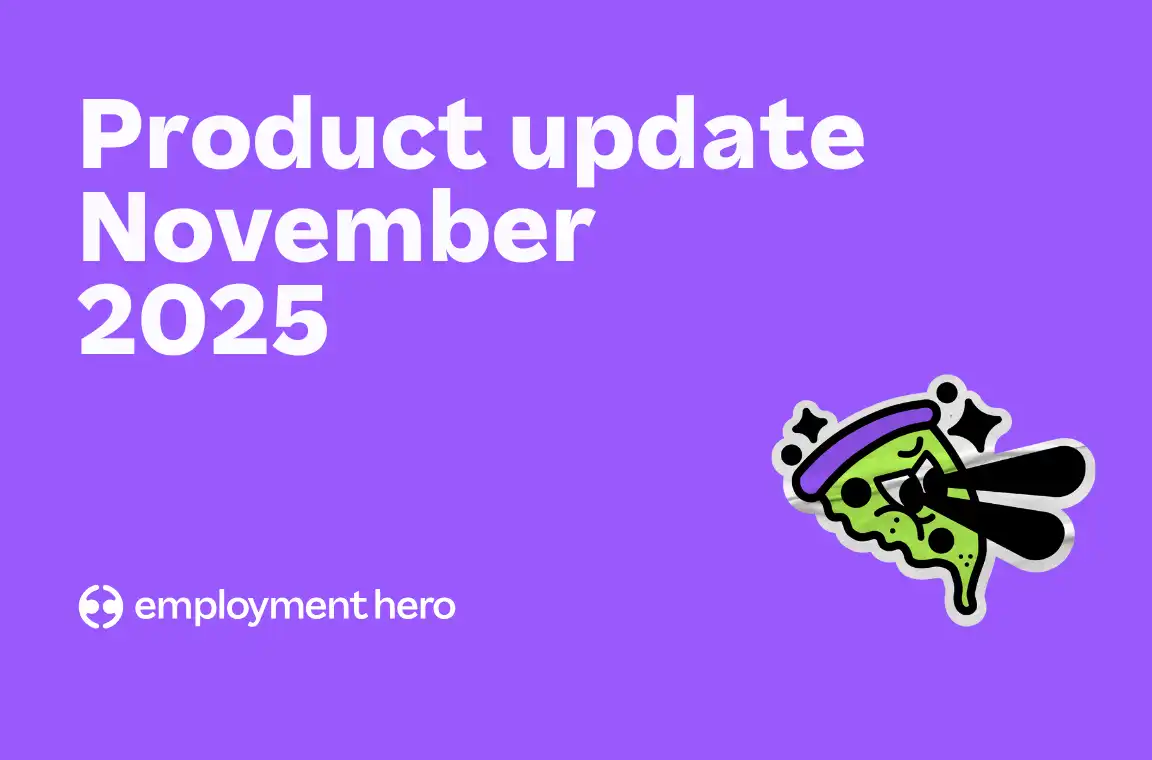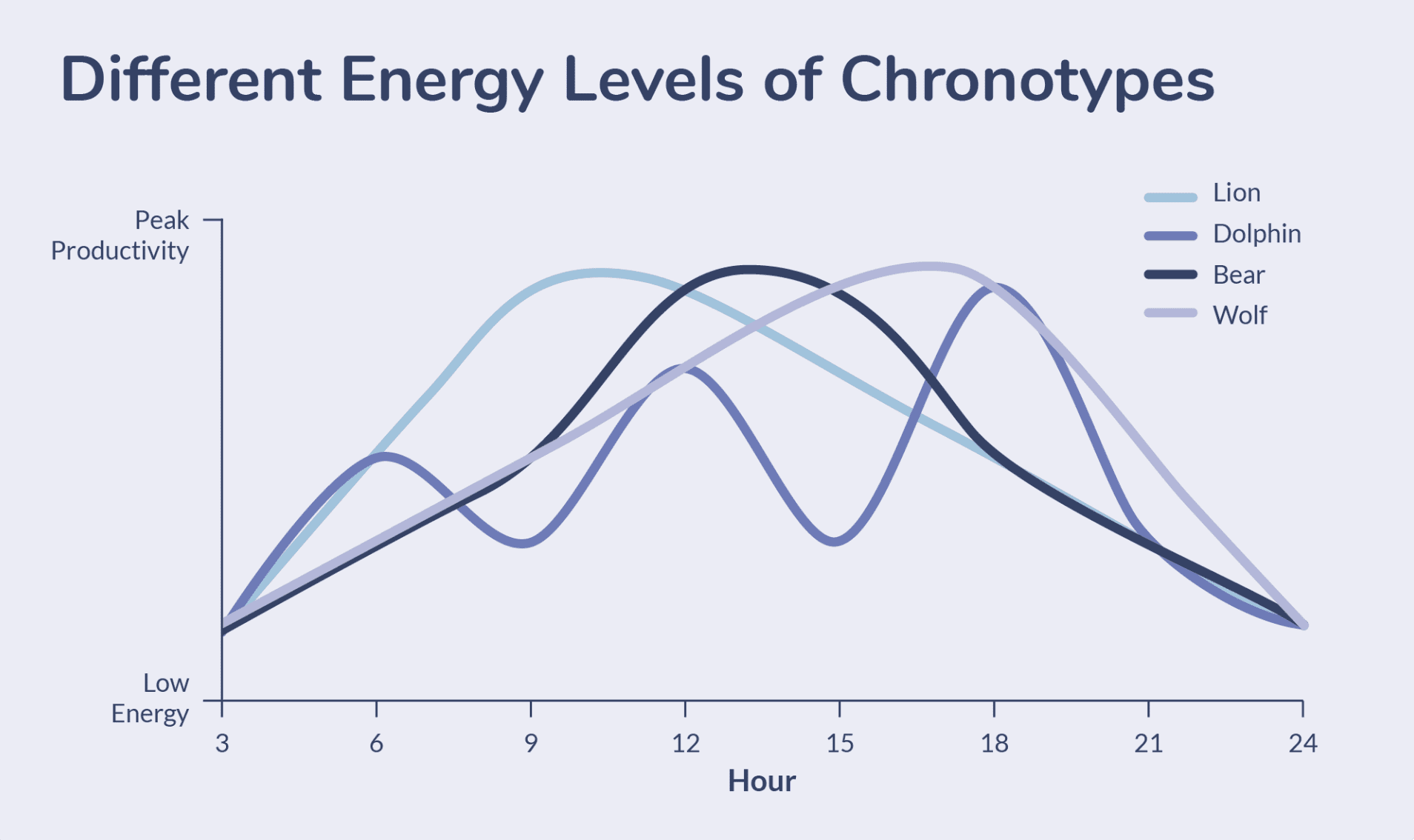What your chronotype can teach you about your optimal work pattern
Chronotypes are human personality types that have everyone talking right now. Which type are you and how can you use it at work?

Contents
Picture this – it’s 11am, you’re on your second coffee of the day, your eyes won’t stay open and you can’t believe there’s still hours of work to go. Could you manage a sneaky nap? Do you want to? Turns out, it might not just be your caffeine addiction and late night television making you feel this way.
Chronotypes have become the latest topic of discussion in the world of human personality types, bringing new meaning to ‘early birds’ and ‘night owls’. It’s all about your body’s natural disposition towards alertness at certain times of the day and night. As with everything, we’re not all made the same.
We’re here to break down the different chronotypes, help you figure out which chronotype you might be and explain how you can bring that knowledge to your way of working.
What is a chronotype?
A chronotype is your body’s tendency towards being alert or sleepy at different times of the day. It’s not influenced by light or outside factors, but rather a specific gene that all humans have, known as the PER3 circadian clock gene. That gene varies in length, which can affect how people react to different points of the day.
With that in mind, you can’t change or retrain your chronotype – as any ‘early bird’ will recognise when trying to wake a ‘night owl’ up at 6am!
Why are chronotypes important?
Chronotypes are important as they really do affect every aspect of your life. Of course, for most people it’s near impossible to navigate their day entirely around their chronotype – for example, getting out of Sunday lunch with the parents might be a challenge if your only reason is that you need a nap at that time. However, if you make small, subtle changes that allow you to better use your energy peaks, you could see a real boost in how you approach work, life and play.
That discussion has extended into the way we work, with UK journalist Ellen Scott coining the term ‘chronoworking’. Estimated to be the next trend in the future of work, it’s about employers giving employees more flexibility in their working hours, so they can better work around their own chronotype patterns.
Chronoworking is something that we support here at Employment Hero and see strong productivity from as a result. Our team works asynchronously across the world, so people have more freedom to work the hours they choose. That might mean getting the bulk of your work done before most people are awake or taking a mid-afternoon break to resume work later on.
Importantly, no one should be expecting a prompt reply from anyone because their working hours are their own, and team members are encouraged to switch off when outside of those hours – which stops any of those notorious toxic workplace habits in their tracks.
Chronotype categories
There are a few different ways in which chronotypes are categorised – the most popular method was introduced by Dr Michael Breus, who split them into four groups, informally named as bears, wolves, lions or dolphins.
Which one do you think sounds like you?
 Lion
Lion
Do you count yourself as an early bird? Then you’re probably a lion, which represents around 15% of the population. Lions love to wake up early and get their best work done before midday. They’re box-tickers, who feel most accomplished when they’ve got the bulk of their work done early in the day. Their energy levels go down after lunch and by evening, they’re ready to switch off. A happy bedtime is a respectable 10pm.
Your best working style is…
Starting the day with a bang! Make the most of that early energy and schedule your deepest, most challenging work for the mornings. Trying to get the hard stuff done at 4pm is unlikely to work well for you, so leave the casual work, informal meetings or admin for this time.
 Bear
Bear
If the standard working hours of 9 to 5 tend to work well for you, you’re probably a bear – the most common chronotype that applies to 55% of the population. A bear goes with the sun, waking up when it rises and naturally winding down as darkness comes in, so they’re usually awake between 7am and 11pm. Peak hours for a bear are between 10am and 2pm.
Your best working style is…
Sticking to standard business hours – a bear chronotype will serve you well. Just be aware that your peak is in the middle of the day, so schedule the most mentally draining work for that time and maybe leave lunch until a little later than normal. Also watch out for those daylight savings and seasonal changes, which can mess with your body clock as the sun sets differently.
 Wolf
Wolf
If early mornings make you quake with fear, and late nights are your happy place, you’re probably the 15% of the population who are defined as a wolf. Wolves work best when they can start the day a little later, and will be most productive around 1pm to 5pm, with some bursts of energy in the evening. Staying up until midnight isn’t a challenge for a wolf.
Your best working style is…
Saving up the big stuff until later in the day. Give yourself a little more time to get set up and motivated in the morning, and don’t try and push yourself to go into deep focus mode at 8am. Feeling a bit tired in the morning is normal for you, so don’t overdo the caffeine to compromise either!
 Dolphin
Dolphin
If getting great sleep is a challenge for you, then you could be part of 10% of the population that has the dolphin chronotype. Like dolphins who have to remain alert while sleeping in case of predators, human dolphins tend to be sensitive to external disruption when sleeping and have fragmented sleep patterns as a result. They’re most productive between 3pm and 7pm, but it can vary depending on the night they’ve had.
Your best working style is…
One that is compassionate to your sleeping schedule (or lack thereof). It might require some flexibility in how you approach your work – for example, getting the hard stuff done earlier on days where your sleep was better, but allowing for some additional rest on those days where sleep was heavily disrupted. You’ll likely see energy dips throughout the day, so make sure to use the peaks when you have them and dial it back when you need to.
The remaining 5% of the population will be a mix of these chronotypes, but will generally lean towards one chronotype over the other three.
How to integrate chronoworking into your workplace
The key to employees chronoworking to their peak productivity? It’s all about flexible working. Enabling flexibility in hours and place of work can bring a whole new dimension to how your team works, and you could see a significant boost in productivity as a result. No more late nights for the lions, or early mornings for the wolves – everyone works to the times that best suit their working style.
 The ultimate partnership
The ultimate partnership
Not just that – flexible work schedules can help reduce stress levels, increase productivity, boost morale, reduce lateness and absenteeism, reduce employee turnover and help employees achieve a better work-life balance. Our Remote Work Report saw flexible working as the top benefit that employees wanted to see from their workplace too.
If that all sounds daunting, it doesn’t have to be. We’re here to get your started with an easy flexible working policy template, as well as some best practices to learn from.
Employment Hero’s HR software is also designed to support this change – created by a company who walks the walk when it comes to flexible working. It comes with a host of features to ensure your team stays connected, wherever and whenever they are working. Find out more by speaking with one of our team members today.
Disclaimer: The information in this blog is current as at 4 April 2024, and has been prepared by Employment Hero Pty Ltd (ABN 11 160 047 709) and its related bodies corporate (Employment Hero). The views expressed in this blog are general information only, are provided in good faith to assist employers and their employees, and should not be relied on as professional advice. The Information is based on data supplied by third parties. While such data is believed to be accurate, it has not been independently verified and no warranties are given that it is complete, accurate, up to date or fit for the purpose for which it is required. Employment Hero does not accept responsibility for any inaccuracy in such data and is not liable for any loss or damages arising either directly or indirectly as a result of reliance on, use of or inability to use any information provided in this article. You should undertake your own research and to seek professional advice before making any decisions or relying on the information in this blog.
Other helpful resources:
Related Resources
-
 Read more: PEO vs. EOR: A guide to global hiring
Read more: PEO vs. EOR: A guide to global hiringPEO vs. EOR: A guide to global hiring
Learn the key differences between a PEO and an EOR. Discover why an EOR is the smarter, safer way to…
-
 Read more: Product Update: November 2025
Read more: Product Update: November 2025Product Update: November 2025
Welcome to the November 2025 product update from the Employment Hero team. We’ve got lots to share around Workflows, Rostering,…
-
 Read more: Payday Super pressure eased: Employment Hero fires Australia’s first real-time super payment from inside payroll – less than a month after the laws passed
Read more: Payday Super pressure eased: Employment Hero fires Australia’s first real-time super payment from inside payroll – less than a month after the laws passedPayday Super pressure eased: Employment Hero fires Australia’s first real-time super payment from inside payroll – less than a month after the laws passed
One month on, Employment Hero, Zepto and OZEDI deliver the first payroll-embedded super-clearing payment over the New Payments Platform (NPP),…
























 Image source: sleepdoctor.com
Image source: sleepdoctor.com